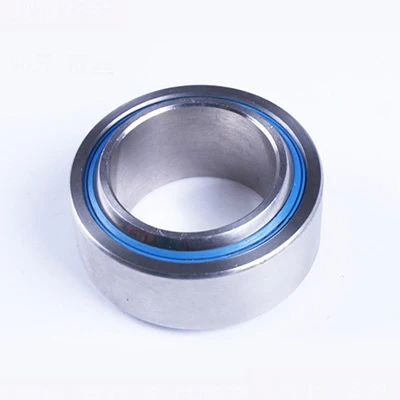When it comes to selecting bearings, stainless steel and chrome steel bearings are two of the most common materials. Each has its unique advantages and is suited to different applications. In this blog, we’ll compare these two materials and help you decide which one is the best fit for your needs.
1. Temperature Resistance: Which Bearing Performs Better in High-Temperature Environments?
When high temperatures are a factor, stainless steel bearings typically outperform chrome steel bearings. While chrome steel bearings are only capable of withstanding temperatures up to 150°C, stainless steel bearings can handle temperatures up to 300°C, provided they are properly lubricated. This makes stainless steel bearings ideal for high-temperature environments, such as in the food processing, chemical, or high-heat machinery sectors.
In particular, 304 stainless steel, a popular grade for bearings, has excellent resistance to corrosion and oxidation at higher temperatures. It is widely used in environments where corrosion is a significant concern, such as marine or food industries. However, it is worth noting that 304 stainless steel is not as hard as chrome steel, so it may not perform as well under high-load conditions.

On the other hand, chrome steel bearings are more suitable for moderate temperature applications. Their performance deteriorates quickly above 150°C, causing a significant drop in load capacity. Therefore, for applications with high heat, stainless steel bearings are the better option.
2. Corrosion Resistance: Which Material Holds Up Better in Damp or Corrosive Environments?
In terms of corrosion resistance, stainless steel bearings—especially those made from 304 stainless steel—have a clear advantage. 304 stainless steel is highly resistant to moisture, salt, and a range of chemicals, making it an excellent choice for use in marine environments, chemical plants, and industries where hygiene is a top priority, such as the food and pharmaceutical sectors. It is considered one of the best materials for resisting rust and corrosion in challenging environments.
In contrast, chrome steel bearings are vulnerable to rust and corrosion in damp or chemically aggressive environments. If your application is in a wet or corrosive setting, stainless steel bearings (particularly 304 stainless steel) are the better choice for long-term reliability.
3. Load Capacity and Durability: The Strength of Chrome Steel Bearings
When it comes to load capacity and wear resistance, chrome steel bearings generally have the upper hand. Made from high-carbon chrome steel, these bearings are much harder, which translates to better load-bearing capabilities and improved wear resistance. In fact, chrome steel bearings typically offer longer service life than 440-grade stainless steel bearings, especially in high-load, high-speed applications.
304 stainless steel bearings, while excellent for corrosion resistance, are not as hard as chrome steel and are therefore not the best choice for high-load or high-speed environments. They may wear out more quickly under heavy load conditions. Therefore, for demanding mechanical applications, chrome steel bearings remain the preferred choice.
4. Cost Considerations: Balancing Performance and Budget
While stainless steel bearings offer superior performance in terms of temperature resistance and corrosion resistance, they come at a higher price point. 304 stainless steel bearings, in particular, are more expensive than chrome steel bearings due to the additional cost of the raw material and manufacturing process.
However, for applications where corrosion resistance and higher temperature performance are essential, the higher price of stainless steel bearings, including 304 stainless steel, is justified. For general industrial use where corrosion and high temperatures are not significant concerns, chrome steel bearings provide a more cost-effective solution without sacrificing too much performance.
5. Noise and Lubrication: Fine-Tuning for Optimal Performance
In environments where low noise is important, chrome steel bearings are generally preferred. Their higher hardness and smoother surface finish result in less friction and lower noise levels. That said, proper lubrication is essential for both types of bearings to ensure their longevity and smooth operation, particularly in high-temperature applications where lubrication plays a critical role in performance.
Conclusion: Which Bearing Material Should You Choose?
- High-Temperature Environments: Choose stainless steel bearings (including 304 stainless steel) for superior temperature resistance, capable of handling up to 300°C with proper lubrication.
- Corrosive or Damp Environments: Opt for 304 stainless steel bearings, which are highly resistant to rust and corrosion in moist or chemically aggressive conditions.
- Heavy Load and High-Speed Applications: Chrome steel bearings are better suited due to their higher load capacity and durability.
- Cost-Effective Solutions: For general-purpose applications, chrome steel bearings are more affordable while still offering excellent performance.
Ultimately, the best choice between stainless steel and chrome steel bearings depends on your specific application requirements. By understanding the unique characteristics of each material, including the benefits of 304 stainless steel for corrosion resistance and temperature resilience, you can make an informed decision that ensures optimal performance and longevity for your machinery and equipment.


